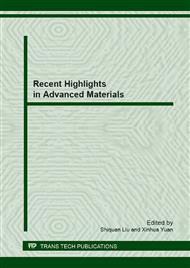p.504
p.510
p.515
p.519
p.523
p.527
p.531
p.535
p.539
Finite Element Simulation and Experimental Study on Isothermal Forging Technology for a Complex-Shaped Titanium Alloy Wing
Abstract:
A closed isothermal forging process was adopted for precision forming of the Ti-6Al-4V wing with a variable cross-section asymmetric structure. Firstly, simulations under different process parameters, such as the deformation temperature, punchs velocity et al. were analyzed with DEFORM-3D software to eliminate the defects in the isothermal forming process. The simulation results demonstrated that the loads during isothermal deformation were determined not just by the forging temperature but the punchs velocity, the less velocity of punch, the better filling ability, and yet temperatures from 900 to 950°C had less influence on filling ability. To verify the validity of simulation results, the isothermal forging experiment was carried out on an isothermal forging hydraulic press (THP10-630). It is demonstrated that the optimized billet dimension can ensure the quality of forging part and the titanium alloy wing component with complex shape was successfully forged with the punch speed of 0.1mm/s at 950°C and its mechanical performances were improved.
Info:
Periodical:
Pages:
523-526
Citation:
Online since:
September 2013
Authors:
Price:
Сopyright:
© 2014 Trans Tech Publications Ltd. All Rights Reserved
Share:
Citation:


